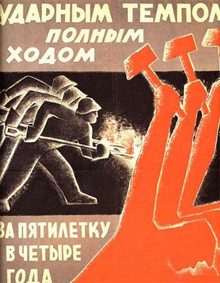If you haven’t read my two lengthy columns earlier this week about the recent Senate committee hearing about how to spend the Air Resource Board’s cap and trade auction revenues, take the time to do so – Part l is HERE, and Part ll is HERE.
They exemplify what takes place inside the State Capitol every day, and show how policy is made.
I transcribed exactly what was said at the four-hour hearing on climate change policies, with Senators deciding how to spend the anticipated $3 to $5 billion a year taxed on California businesses who have been deemed polluters by the California Air Resources Board.
The billions of dollars expected from the California Air Resources Board’s cap and trade auctions are expected to pay for the anticipated transition from a market economy to a centrally planned one. Yet nothing in AB 32, California’s Global Warming Solutions Act, authorizes creation of an auction process to sell carbon dioxide emission allowances for billions of dollars.
The California Air Resources Board just passed an updated Scoping Plan for AB 32, which calls for CARB to further regulate:
- energy production and distribution,
- transportation, land use, fuels, and infrastructure,
- farming,
- waste generation and disposal,
- forestry and ranching, and
- construction and building management.
To pay for all of this Soviet-style central planning, CARB looks forward to collecting billions of dollars annually from its illegal cap and trade allowance auction.
EPA and CARB
Under the latest federal Environmental Protection Agency of new rules, released June 2, by 2030 states must slash carbon dioxide emissions by 30 percent below 2005 levels.
The earlier regulations California adopted required carbon emissions to be reduced to 1990 levels by 2020.
California has embraced and adopted this regulatory onslaught, and is using it to bolster the state’s existing horrific regulations, designed to control and kill-off business.
“The new rules supposedly give states ‘flexibility’ in deciding how to meet the mandates,” according to David Rothbard and Craig Rucker, writing for Watts Up With That, the world’s most viewed website on global warming and climate change. “However, many will have little choice but to impose costly cap-tax-and-trade regimes like the ones Congress has wisely and repeatedly refused to enact. Others will be forced to close perfectly good, highly reliable coal-fueled power plants that currently provide affordable electricity for millions of families, factories, hospitals, schools and businesses. The adverse impacts will be enormous.”
Welcome to California, where the Air Resources Board is California’s version of the Soviet Union’s State Committee For Planning. “Gosplan” was the central board that supervised the planned economy of the Soviet Union, outlined by the Communist Party and the government. Gosplan decided how much industry in the Soviet Union was to grow in each five year period.
“The rules will further hobble a US economy that actually shrank by 1% during the first quarter of 2014, following a pathetic 1.9% total annual growth in 2013,” Watts said. “They are on top of $1.9 trillion per year (one-eighth of our total economy) that businesses and families already pay to comply with federal rules.”
CARB’s Central Planners
The CARB is a 12-member state board made up of governor appointees. These board members are not elected, yet are making policy everyday, illegally.
Gosplan was also an advisory council to the government, which spent years implementing plans which called for rapid industrialization and a drastic reduction of the private sector of the economy. Gosplan’s functions were changed from coordination, to creation and supervision
Since the 2006 passage of AB 32, California’s Global Warming Solutions Act, the ARB has used this law to add regulations on manufacturers, food processors, agriculture, auto and truck owners, trucking companies, energy producers, and more.
Their justification is eerily familiar to anyone who has studied Communist governments
“California’s approach to climate change is not simply about reducing greenhouse gas emissions,” the CARB says in its new Scoping Plan. “It is built upon the principle that economic prosperity and environmental sustainability are one and the same. And it continues the State’s long and successful legacy of building a world-class economy in concert with some of the most effective environmental and public health policies on the planet.
By remaining steadfastly committed to this approach, we can not only do our part to tackle climate change, we can also forge a cleaner, healthier, and more sustainable future for all Californians.
In the words of Governor Brown, our collective challenge is to “build for the future, not steal from it.” That is what this Plan is designed to do.”
AB 32 was passed by the Legislature and signed into law by Gov. Arnold Schwarzenegger. But since then, the CARB has made sweeping policy well outside of the scope of AB 32. And despite holding the authority over the CARB, the Legislature has allowed this — illegally.
AB 32 established the goal of reducing greenhouse gas emissions statewide to 1990 levels by 2020. We have already bypassed 1992 levels of carbon emission reduction, which is why the EPA and CARB have established new goals.
The EPA and the Intergovernmental Panel on Climate Change claim human activities are responsible for almost all of the increase in greenhouse gases in the atmosphere over the last 150 years. And California Democrats have bought into this definition.
Yet greenhouse gases make plants grow. Greenhouse gases are pumped into greenhouses where food is grown,; plants need a constant supply of carbon dioxide for sugar production.
Cap and trade
In order to help achieve this greenhouse gas emission reduction goal, the California Air Resources Board adopted a regulation to establish a cap and trade program that places a “cap” on the aggregate greenhouse gas emissions from entities responsible for roughly 85 percent of the state’s GHG emissions.
As part of the cap and trade program, the ARB created quarterly auctions where the state agency sells carbon emission allowances. These auctions are likely to generate billions of dollars in state revenue over the coming years.
A cap and trade tax limits the amount businesses can pollute unless they buy a permit to pollute over the limit. With the permit, they can “trade” the excess permits as long as they don’t go over the limit.
Central Planners upping the ante
The California Air Resources Board central planners have just given the nod to the EPAs new rules.
A recent U.S. Chamber of Commerce study found these new regulations will cost the U.S. economy another $51 billion annually, result in 224,000 more lost jobs every year, and cost every American household $3,400 per year in higher prices for energy, food and other necessities.
Poor, middle class and minority families – and those already dependent on unemployment and welfare – will be impacted worst, according to the U.S. Chamber study. Those in a dozen states that depend on coal to generate 30-95 percent of their electricity will be hit especially hard.
The results will be fuel rations and control of the states’ natural resources.
This is the first update to the original AB 32 Scoping Plan, which ups the carbon emissions decrease requirement to 80 percent below 1990 levels by the year 2050. The result will negate nearly 100 years of economic growth in the Golden State.
Legal challenges
“Businesses already operating under a hostile regulatory climate now face this prospect: to continue operating in the state they will have to bid for the privilege of using almost any fuel that produces carbon dioxide (the stuff we exhale) under CARB’s Cap-and-Trade auction,” the Pacific Legal Foundation recently wrote. PLF attorneys are challenging the auction regulation because it was not authorized by the state Legislature, and the billions of dollars to be collected under the auction are unconstitutional taxes because they were not approved by the required two-thirds vote of the Legislature.
PLF’s legal challenge to the CARB auctions, filed on behalf of many California businesses, associations, and individuals, is currently pending in the Court of Appeal in Sacramento, where briefing is scheduled through the Fall of 2014.
Without the billions of dollars from the cap and trade auctions, CARB will be unable to implement this unprecedented regulatory power grab.





